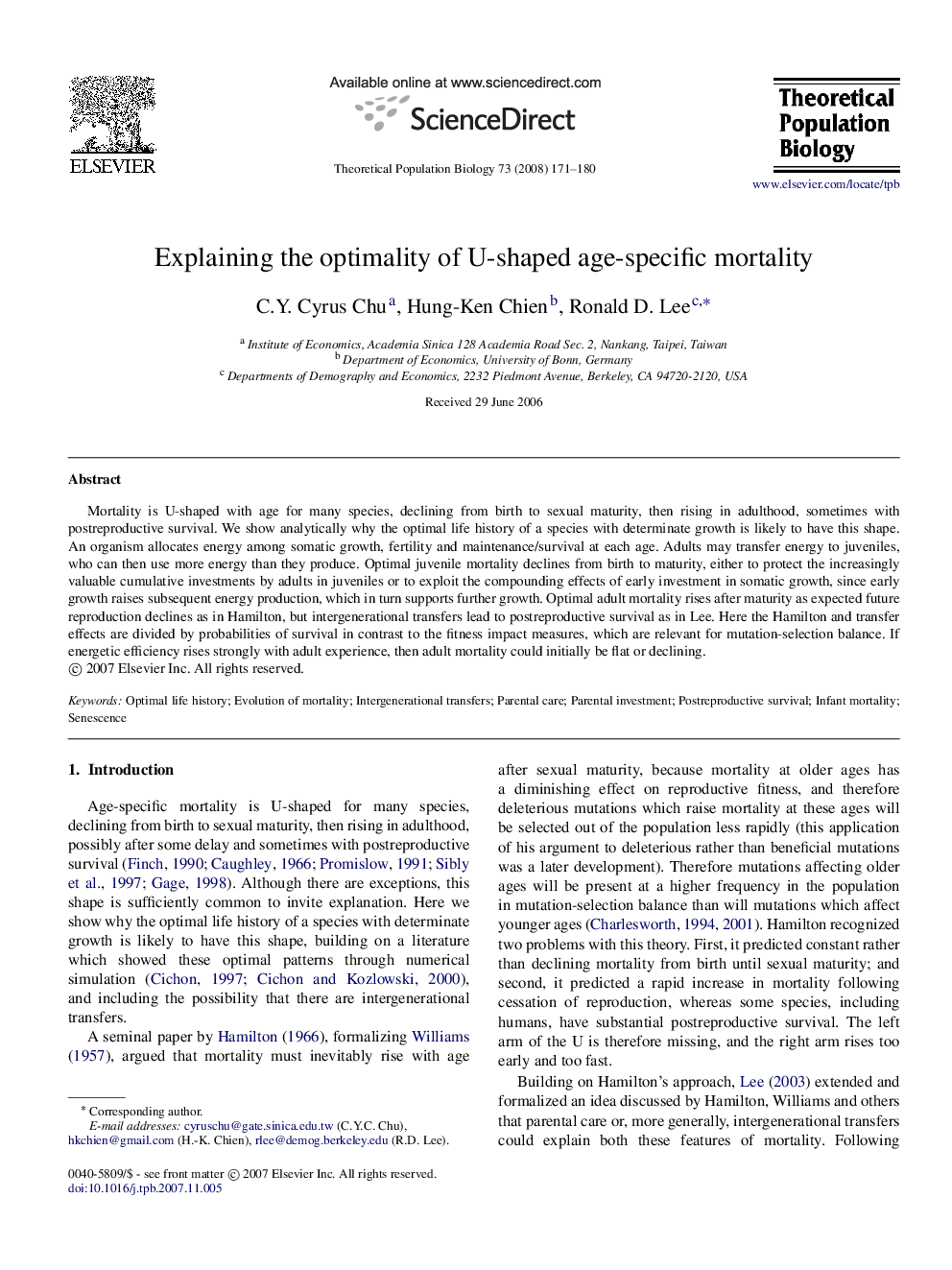| کد مقاله | کد نشریه | سال انتشار | مقاله انگلیسی | نسخه تمام متن |
|---|---|---|---|---|
| 4502873 | 1320607 | 2008 | 10 صفحه PDF | دانلود رایگان |
عنوان انگلیسی مقاله ISI
Explaining the optimality of U-shaped age-specific mortality
دانلود مقاله + سفارش ترجمه
دانلود مقاله ISI انگلیسی
رایگان برای ایرانیان
کلمات کلیدی
موضوعات مرتبط
علوم زیستی و بیوفناوری
علوم کشاورزی و بیولوژیک
علوم کشاورزی و بیولوژیک (عمومی)
پیش نمایش صفحه اول مقاله

چکیده انگلیسی
Mortality is U-shaped with age for many species, declining from birth to sexual maturity, then rising in adulthood, sometimes with postreproductive survival. We show analytically why the optimal life history of a species with determinate growth is likely to have this shape. An organism allocates energy among somatic growth, fertility and maintenance/survival at each age. Adults may transfer energy to juveniles, who can then use more energy than they produce. Optimal juvenile mortality declines from birth to maturity, either to protect the increasingly valuable cumulative investments by adults in juveniles or to exploit the compounding effects of early investment in somatic growth, since early growth raises subsequent energy production, which in turn supports further growth. Optimal adult mortality rises after maturity as expected future reproduction declines as in Hamilton, but intergenerational transfers lead to postreproductive survival as in Lee. Here the Hamilton and transfer effects are divided by probabilities of survival in contrast to the fitness impact measures, which are relevant for mutation-selection balance. If energetic efficiency rises strongly with adult experience, then adult mortality could initially be flat or declining.
ناشر
Database: Elsevier - ScienceDirect (ساینس دایرکت)
Journal: Theoretical Population Biology - Volume 73, Issue 2, March 2008, Pages 171-180
Journal: Theoretical Population Biology - Volume 73, Issue 2, March 2008, Pages 171-180
نویسندگان
C.Y. Cyrus Chu, Hung-Ken Chien, Ronald D. Lee,